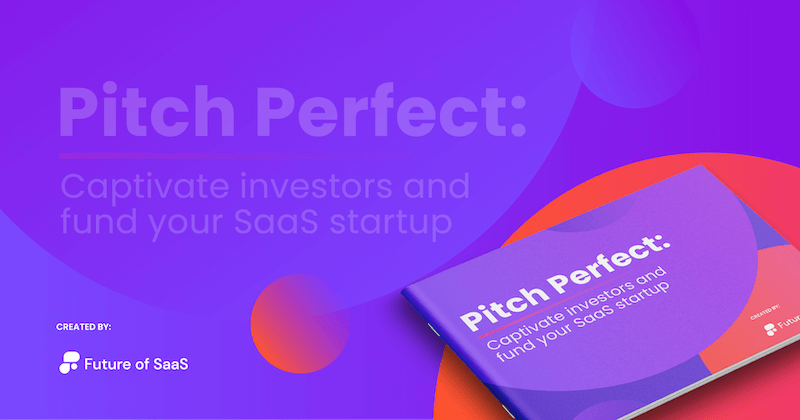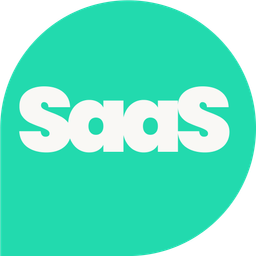What is the B2B SaaS business model?
The B2B SaaS business model sells software to customers using subscription-based pricing models, and uses online marketing channels to attract customers. There’s a real emphasis on letting the product sell itself, and on retaining customers once you’ve won them over to increase their lifetime value (LTV).
B2B stands for “business-to-business”, meaning this is a business targeting other businesses as customers.
SaaS stands for Software as a Service. Businesses lease access to their software application to other businesses, for a fee. These other businesses don’t own the software, they just pay for access to it, so it’s called a service.
The 5 pillars of B2B SaaS
So, how exactly do B2B SaaS companies work? There are about five important pillars of success in B2B SaaS. They are:
- Product-led growth
- Subscription-based pricing
- Customer support investment
- Email marketing
- Social media marketing
Let’s examine each in some detail.
Product-led growth
The first pillar of SaaS is that it follows a product-led growth strategy. This means it’s all about the product. The product does the talking and, wherever possible, sells itself.
When the business needs to see more growth, the answer lies in the product. More product investment equals more growth.
Nowhere is this more evident than in businesses using what’s called a low-touch SaaS sales model, where as few people as possible are involved in the selling process.
This is a strategy that thrives on free trials and freemium models. Customers discover the product, land on the website, try it out for free, and are so wowed that they allow their free trial to roll over into a paying subscription.
From there, the name of the game is to get these customers to stick around.
Subscription-based pricing
Consider your phone bill, your power bill, or (if you’re old enough to remember), your cable bill.
You get locked into a contract – a contract with an exit fee. If you want to leave before the contract expires, you have to pay for the privilege of walking away.
The cable bill example is pertinent, because Netflix came along and disrupted the entire industry… with a subscription model. It worked so well, that other companies had to follow suit, and studios that produced excellent shows back in the day scrambled to lease streaming rights for those shows (think Seinfeld, or the Sopranos) to one or more streaming services.
With a subscription-based model, SaaS companies can capture market share by enticing customers with lower (initial) price points than software licenses, and by offering them the freedom to leave at any time (more on this later).
Customer support investment
Customer acquisition is not cheap.
The obvious benefit (for the company) to locking customers into a contract with an exit fee is it disincentivizes them from leaving.
Subscription-based SaaS businesses have no such luxury. Therefore, investing in keeping customers around (and in the team that makes that happen) becomes essential to the success of the business.
The term customer support evolved into customer success in the SaaS industry to push a new paradigm: one that goes beyond passively waiting for customer issues and solving them, to one that takes a proactive approach to ensuring that customers have a great experience, so those customers do not churn.

Email marketing
If you’re selling SaaS, you’re selling software. Obviously.
Also obvious is that, if you want to sell products, you have to go to where your customers are likely to be. When you’re selling B2B SaaS, then, it makes sense to target people who are… well, on their computers at work.
And while B2B means “business to business”, it’s still a person, with a real life outside of work, that’s seeing your SaaS marketing communications and considering the ways your product could make their (very human) life easier.
Bearing that in mind, email marketing manages to hit on many of the requirements a B2B SaaS company needs from its primary marketing channel:
- Messages can be addressed to individuals, and speak to the pain points an individual feels at work, rather than taking on the impossible task of selling to the entire business from the first touchpoint.
- Your target audience are online when they receive your communications, so can follow links to landing pages that further sell them on your products.
- You can control the timing of your communications, so customers receive them when they’re at work, and close to any decision makers whose ears they need to turn before they can become paying customers.
Social media marketing
While email marketing can be very effective, there are other ways to target customers online. Plus, email fatigue is real. With so many emails landing in your inbox every day, differentiation in your marketing is a must, and simply using multiple platforms can be a good way to achieve it.
Paid ads in search engine results are one way, but there’s another that lets you connect directly with your audience in a way that’s scalable without needing extra cash: social media marketing.
Sure, you can pay to push ads on social media platforms, but you can also strategically curate a brand presence on the platforms your audience hangs out on most.
However a SaaS brand chooses to attract its customers, it has to be effective, it has to be scalable, and it has to target members of the target market where they are.
Both email and social media marketing achieve these ends, making both of them great options for B2B SaaS businesses.
Pros and cons of the SaaS business model
So, we understand what the business model is, and what makes it work… but what are its pros and cons?
First, the advantages:
SaaS business model advantages
Predictable revenue streams
One of the biggest advantages of the SaaS business model is actually its pricing strategy. With a subscription model, a business gets a steady and predictable revenue stream via MRR (monthly recurring revenue). You know how many customers you have, you know what they’re paying, and you know pretty accurately what you stand to make each month.
The practice of collecting payments monthly also gives a business 12 times the number of data points a business collecting payments just once a year gets. This allows these businesses to pivot far more quickly than they otherwise could.
Even more importantly, it allows these businesses to paint a positive picture for investors much more quickly.
Attractive to investors
Having a steady, predictable revenue stream might sound like small potatoes or common sense, but it’s catnip to investors. Just as this model de-risks the investment for the customer (more on that later), it de-risks the investment for anyone looking to allocate their unused capital to an up-and-coming business.
Both risk-averse and risk-taking investors like B2B SaaS businesses. Investors looking to take on risk won’t mind that a company might only be a year or so old if it’s showing great signs of growth and profitability. A risk-averse investor, meanwhile, might only look to make a short-term play based on the sparse amount of historical data.
At the same time, businesses are slower to change their minds than individuals, since there’s more complexity in the decision-making process. So won business customers are less likely to churn than fickle consumers, making B2B companies more stable investments.

High growth potential
Since they’re so attractive to investors, promising SaaS companies can quickly attract the capital necessary to grow. As a result, SaaS companies scale well, and quickly.
What’s more, because the software that forms the service the business is selling is under continual development, and teams can implement those developments and changes fast, with little to the user, even mediocre products can, over time, become powerfully persuasive to investors.
Ease of setup
Another benefit of SaaS as a business model is that the product is inherently easy to set up. Customers can be onboarded quickly, and provide feedback to improve the product and overall customer experience, since there’s no on-premises hardware for them to set up.
Customers just download an app, or run it in the browser, making for a simple, streamlined experience that, again, requires very little human intervention.
SaaS business model disadvantages
Higher churn rate potential (no disincentives)
As we’ve mentioned, the subscription focus associated with the B2B SaaS businesses model carries an inherent risk: higher churn rates. There are no disincentives against leaving, so if customers aren’t having a good time, leave is what they’ll do.
That said, there’s a silver lining. Customer churn is important feedback about the state of your product, and B2B SaaS companies are well-placed to action that feedback and fix the problem.
High costs of going to market
Truly skilled software developers are still in high demand. Such high demand, in fact, that their labor is not at all cheap.
As a result, developing a quality SaaS product that’s sufficiently differentiated from the competition will always be expensive. And since having a product to sell is necessary for a business to exist, just getting to market will always be expensive for a SaaS business.
Not only is the product development important, but since you’re targeting customers online, your website (literally your digital storefront), needs to be ship-shape. Yup, you guessed it, that means hiring web developers (also not cheap).
As if that weren’t enough, you’ve also got marketing and sales costs to think about. Because once you have a product, and a website to direct people to, you need your target audience to know about it, and you need to persuade them to buy (or try) it. For all these reasons, upfront costs associated with getting a SaaS product to market can be high.
Software security and hardware failure
Software-based products come with different security risks than physical ones. The computer servers that deliver your service to customers can come under attack, or can fail completely.
If those servers do come under attack, a number of things can happen. First, your service could go down. While customers can be understanding, if they’re relying on your service to be able to do their jobs, they won’t be very happy when this happens. And it will happen sooner or later.
What’s more, you’ll be storing your customers’ data in databases housed on their own servers. This, too, presents a security risk. But while customers might forgive not being able to access your service for a couple of minutes or even hours, they’re much less likely to forgive the leaking of their data in the event someone manages to crack your security.
That’s why it’s imperative that SaaS businesses invest in security audits, and strong protections, despite their costliness.

SaaS metrics to nail for sustainable growth
Here are some of the metrics you’ll want to stay on top of if you’re running a SaaS business
- Monthly and annually recurring revenue (MRR & ARR)
- Churn rate
- Customer acquisition cost (CAC)
- Customer lifetime value (LTV)
- Retention rate
Not familiar with the metrics we’ve mentioned? Check out our full guide to SaaS metrics for a full list.
B2B SaaS pricing, subscription-based models and the freedom to leave
Subscription-based SaaS business pricing models have one very important benefit we’ve not yet discussed: the freedom to leave.
The freedom to leave is crucial, for a number of reasons.
First, it sidesteps the resentment lock-in contracts cause. No one likes being told what to do, and lock-in contracts foster a kind of resentment for being bossed about.
We all know what it feels like to be done with something, to want out, and to be told, “No.” It starts with being told we have to stay at the dinner table ‘til we’ve eaten our vegetables. Now, we find ourselves being told we can’t snap up that steal of a mobile deal because “Contract says No.”
Second, subscription models de-risk the investment for the customer. What’s your biggest motivation at work? Especially when it comes to making critical decisions?
Let’s be honest, looking good is often a secondary concern some ways behind not looking stupid. And it’s a lot easier to not look stupid when, if it turns out early on your decision was a bad one, you’re not locked in for another 18 month serving of contractual obligation to the vendor, with a side of hard glares and no pay review from your boss.
And that’s not all. The subscription model also incentivizes companies to put effort into continually wowing customers with their products, and customers know this.
It’s inherently more trustworthy as well, isn’t it? When a company says, “The door’s right there, you can leave whenever you like,” what they’re really saying is, “We’ve got nothing to hide, and we’re confident in our product.” Contrast that with, “Once you sign up, you’re trapped, and you can’t get out.”
Looking to take your marketing further?
SaaScast hosts guests that'll help you grow, scale up, and work smarter.
Tune in today!





